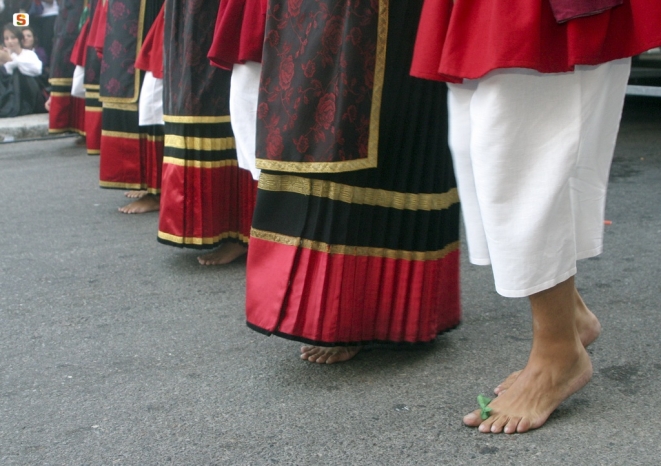The disappearance of Mannorri, between history and legend
In Sardinia there are many tales about villages disappeared because of many different reasons, especially epidemics or floods; but there is a village that has a very special story: Mannorri. To decide the disappearance this small village, on the road from Talana to Urzulei, in the Ogliastra county, has even been a terrible feud in the late eighteenth century.
The story of Mannorri, like all the legends that are observed, is shrouded in mystery. There are historical documents proving that the disappearance of the village took place only because of a bloody disamistade (enmity), but several factors that joined together bring this incredible conclusion. Among these are the small demographic consistency and the expansionist ambitions of neighboring villages, but also an epidemic of plague between 1755 and 1780, reaching exactly the terrible feud that marked the end of the village.

As often happens, the truth is to be found in the middle of all these facts. Leaving aside the historical and anthropological aspects is very proper to enlighten what is one of the most fascinating legends of Sardinia recent history.
Everything is focused on a very beautiful girl, the subject of contention and cause of the terrible feud. One version of the legend of this beautiful Mannorri girl, tells that one day she was approached by a boy, out of the church, and he, with a great courage, gave her a kiss.
The girl, incredulous, did not return and did not protest. But, the next day, the enterprising young man was found dead, hung for the feet in an estate of another suitor. This second antagonist was killed in turn by the brother of the first suitor. A relative of the second victim immediately took revenge and killed in turn, beginning the feud that soon spread to all the families in the village.
But as usual, at this first version of events soon there is another starring a young shepherd, Giuanni Indentiu.
A nasty and violent man who wanted to get married the girl but had to contend with the opposition of the family who broke the promise of marriage. Some argue that the feud was sparked by the killing of the girl's father by Giuanni. While others believe that the union between Giuanni and the beauty of Mannorri would not have been prevented by the girl's family, but by a stranger that she was in love with, then killed by Giuanni.
The fact that the figure of Giuanni and the beauty of Mannorri is not only fictional is confirmed not only by the tales of the elderly of Urzulei, but also by the narrations of the greatest Sardinian researchers as Vittorio Angius and Giovanni Spano, the acts of the extinct Mannorri parish and a variety of documents kept at the State Archives of Cagliari.
These acts demonstrate, among other things, and in an unequivocal way, the existence of a feud between 1775 and 1780 which caused several deaths, including the mayor of the town, who had worked in vain to restore peace; feud that marked the beginning of the end for the village.
In the eighties it was Piero Mannironi who take up the story of the village, writing some articles. Recently, in 2014 a book written by Fabrizio Vella, entitled "Mannorri mysteries and legends of a village disappeared", was published by Carlo Delfino Editore, which retraces these events fully and intriguing.
But who was the beauty of Mannorri? Her name seems to have been identified in that of Cicilloi, surname now extinct, but appearing in different archives. Therefore, with the benefit of the doubt the Bella 'e Mannorri should have been Caterina Cicilloi, born in 1746 from a wealthy family.
About Mannorri today nothing remains. Only a few ruins scattered in the countryside of Urzulei.
The houses were destroyed after being abandoned. About the escape of the inhabitants and their destination have been made many assumptions. The research of Fabrizio Vella puts the emphasis on the fact that the characteristics of the speech of Desulo seem to be quite similar to those of the inhabitants of Mannorri and this suggests a transplant of some of them in the village of Desulo, as well as some families of Onanì seems to be originated in the abandoned village of Ogliastra.
Today the episodes of this disappeared village come down to us in various ways, with their burden of mystery, representing a great cross-section of micro-Sardinian history, steeped in ancient legend but that find, unbelievably, confirm by reality.